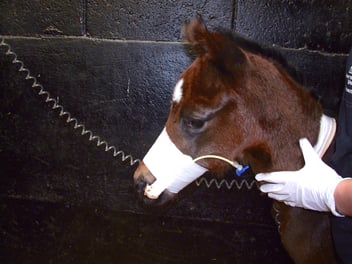Rectal Mucosal Biopsy - Equine Veterinary Insights
This Technique Tuesday, our co-founder and equine veterinary surgeon, Jennifer Corley, is sharing her expertise on Rectal Mucosal Biopsy . Have questions or comments? Drop them in the comment form below, and Jennifer will be more than happy to help! Stay tuned for more exciting insights and techniques.

Equipment
Stocks
Competent horse holder
Sedation/twitch
Sharp long handled biopsy forceps
Rectal sleeve
Obstetrical lubricant
Sample pot containing 10% neutral buffered formalin
23/25ga 1.6cm (5/8 inch) needle
Local anaesthetic
75cm (30 inch) extension set
50-60ml syringe
Technique
Place the horse in the stocks and sedate if necessary. Bandage and tie the tail up or have it held to the side. Evacuate the rectum of faeces taking all of the usual precautions to avoid a rectal tear. Never rectal against straining, use sedation, use plenty of lubrication and or local anaesthetic mixed into the lube if necessary. Introduce the forceps guarded in one hand.
The sample is usually taken approximately 30cm (12 inches) proximal to the anus at a 10 or 2 o’clock position (away from the aorta). The mucosa is immobilized between the finger and the thumb and pulled away from the muscular layers. Before withdrawing the forceps ensure the mucosa is totally separated from the rectum by passing the fingers around the forceps blade. The forceps are then pulled out and the sample placed in formalin. Use a small gauge needle to remove the biopsy sample carefully if it is stuck. It may be necessary to use local anaesthetic if the horse strains while being rectalled. If necessary, instill 20ml local anaesthetic mixed in 40ml lubricant to relax the rectum. Antibiotic cover may be administered at the clinicians discretion.




